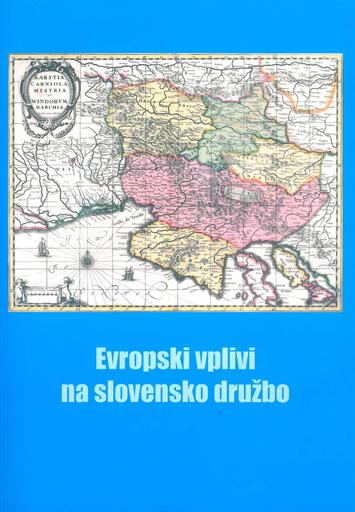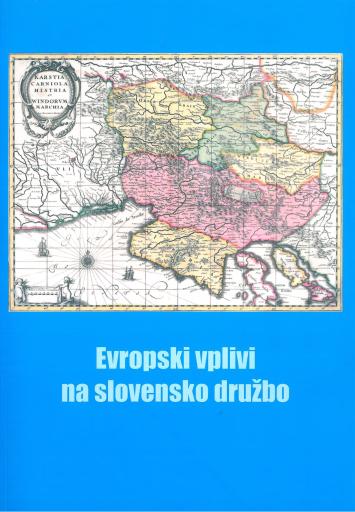/
Literature
/
Monographs
Impact of the Strengthening of the Fascist and Nazi Authority in Italy and Germany on the Measures to Increase Combat Readiness of the Army of the Kingdom of Yugoslavia, with Emphasis on the Drava Banovina Region

Author(s):Zvezdan Marković
Co-author(s):Nevenka Troha (ur.), Mojca Šorn (ur.), Bojan Balkovec (ur.)
Year:2008
Publisher(s):Zveza zgodovinskih društev Slovenije, Ljubljana
Source(s):Evropski vplivi na slovensko družbo
Language(s):slovenščina
Type(s) of material:text
Keywords:vojska, Kraljevina Jugoslavija, bojna pripravljenost, Rupnikova linija, divizijska oblast, mobilizacija, vojaške vaje, vojaško utrjevanje državne meje, army, Kingdom of Yugoslavia, combat readiness, Rupnik line, division authority, mobilisation, military exercises, military fortifying of the state border
Collection(s):Zbirka zgodovinskega časopisa ; 35
Rights:

This work by Zvezdan Marković is licensed under Creative Commons Attribution-NonCommercial-NoDerivs 4.0 International
Files (1)

Name:evropski_vplivi_na_slovensko_druzbo.pdf
Size:185.05MB
Format:application/pdf
Permanent link:https://hdl.handle.net/11686/file18570
Description
Slovenian space is located at a strategically highly sensitive area and it is therefore not surprising that the great powers strive to control the aforementioned paths. These aspirations were further strengthened between the two world wars, especially during the second half of the 1930s, and even more so after the Anschluss, when the Kingdom of Yugoslavia became neighbours with Nazi Germany. The army of the Kingdom of Yugoslavia was forced to accept several measures to increase the country’s combat readiness, which in the end tumed out to be ineffective. In his contribution, the author has analysed these measures, described the organisation of the army in the Kingdom of Yugoslavia, with an emphasis on the area of Drava Banovina, and presented one of the most important measures, which made its mark on Slovenia, the system of border fortresses, impressed on Slovenian historical memory by the name ‘the Rupnik line’.
Metadata (13)
- identifierhttps://hdl.handle.net/11686/35302
- title
- Vplivi krepitve fašistične in nacistične oblasti v Italiji in Nemčiji na ukrepe za povečanje bojne pripravljenosti Vojske Kraljevine Jugoslavije, s poudarkom na območju Dravske banovine
- Impact of the Strengthening of the Fascist and Nazi Authority in Italy and Germany on the Measures to Increase Combat Readiness of the Army of the Kingdom of Yugoslavia, with Emphasis on the Drava Banovina Region
- creator
- Zvezdan Marković
- contributor
- Nevenka Troha (ur.)
- Mojca Šorn (ur.)
- Bojan Balkovec (ur.)
- subject
- vojska
- Kraljevina Jugoslavija
- bojna pripravljenost
- Rupnikova linija
- divizijska oblast
- mobilizacija
- vojaške vaje
- vojaško utrjevanje državne meje
- army
- Kingdom of Yugoslavia
- combat readiness
- Rupnik line
- division authority
- mobilisation
- military exercises
- military fortifying of the state border
- description
- Slovenski prostor je na strateško izredno občutljivem območju, zato nas ne presenečajo težnje velikih sil, da bi na tem prostoru nadzirale omenjene poti. Med obema svetovnima vojnama so se ta prizadevanja še okrepila, zlasti v drugi polovici 30. let 20. stoletja, še bolj pa po anšlusu, ko je dobila Kraljevina Jugoslavija za sosedo nacistično Nemčijo. Vojska Kraljevine Jugoslavije je bila prisiljena sprejemati več ukrepov za povečanje bojne pripravljenosti države, ki pa so se na koncu izkazali kot neučinkoviti. V svojem prispevku je avtor analiziral te ukrepe, opisal vojaško organiziranost v Kraljevini Jugoslaviji s poudarkom na območju Dravske banovine in prikazal enega najpomembnejših ukrepov, ki je pustil svoj pečat na Slovenskem, sistem utrdb na meji, ki se je vtisnil v slovenski zgodovinski spomin z imenom Rupnikova linija.
- Slovenian space is located at a strategically highly sensitive area and it is therefore not surprising that the great powers strive to control the aforementioned paths. These aspirations were further strengthened between the two world wars, especially during the second half of the 1930s, and even more so after the Anschluss, when the Kingdom of Yugoslavia became neighbours with Nazi Germany. The army of the Kingdom of Yugoslavia was forced to accept several measures to increase the country’s combat readiness, which in the end tumed out to be ineffective. In his contribution, the author has analysed these measures, described the organisation of the army in the Kingdom of Yugoslavia, with an emphasis on the area of Drava Banovina, and presented one of the most important measures, which made its mark on Slovenia, the system of border fortresses, impressed on Slovenian historical memory by the name ‘the Rupnik line’.
- publisher
- Zveza zgodovinskih društev Slovenije
- collection
- Zbirka zgodovinskega časopisa ; 35
- date
- 2008
- type
- besedilo
- language
- Slovenščina
- isPartOf
- rights
- license: ccByNcNd
Citirano v (2)
| Tipologija | Avtor(ji) | Naslov | Kraj | Založba | Leto |
|---|---|---|---|---|---|
| 2.01 Znanstvena monografija | Vehar, Maja ; Mikša, Peter | Obmejni trikotnik : okupacijske meje med Idrijo, Žirmi in Polhograjskimi Dolomiti, 1941-1945 | Ljubljana | Znanstvena založba Filozofske fakultete Univerze v Ljubljani | 2021 |
| 1.16 Uvodnik, predgovor, spremna beseda | Šlabnik, Matevž ; Vehar, Maja | Idrija in Žiri kot obmejna kraja 1941-1945 | Ljubljana | Znanstvena založba Filozofske fakultete | 2020 |
Seznam literature v delu (1)
| Stran | Avtor | Naslov | Vir | Kraj | Založba | Leto |
|---|---|---|---|---|---|---|
| 352 | Terzić, Velimir | Slom Kraljevine Jugoslavije 1941 | Beograd - Titograd | 1984 |
